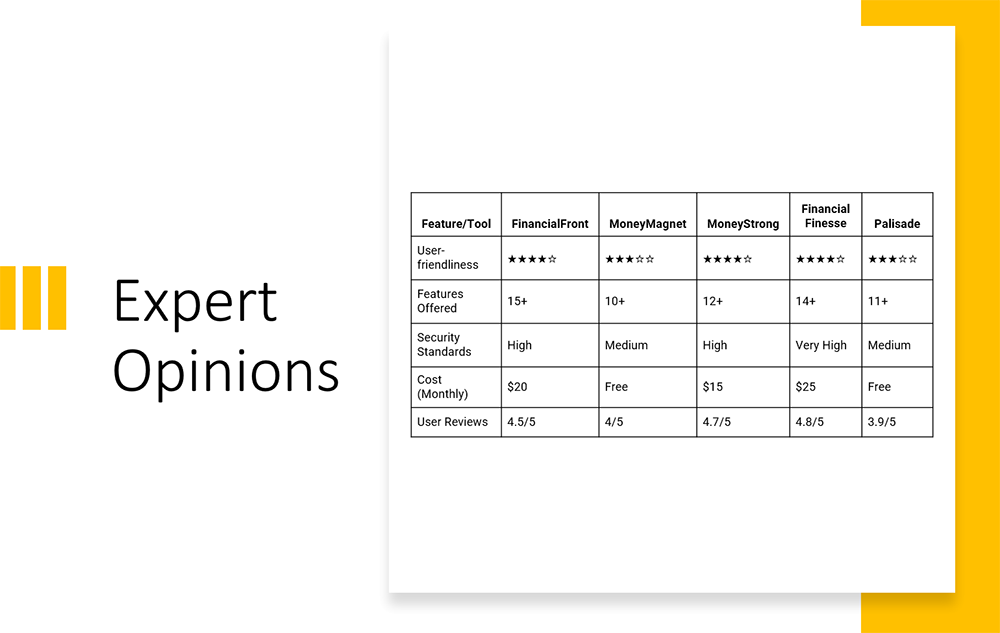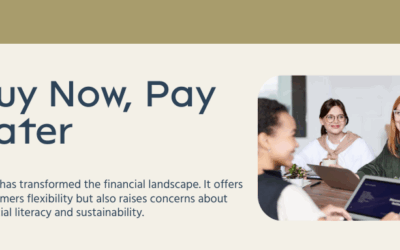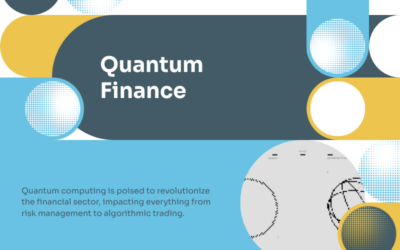What is Digital Financial Planning?
Previously, financial planning was reserved for lengthy meetings with financial advisors, stacks of paperwork, and manual calculations. The traditional methods, while reliable, often lacked the convenience and efficiency that today’s fast-paced world demands.
Enter the digital age and a transformative shift in how individuals and businesses approach financial planning. The transition from ledger books to laptops and from face-to-face consultations to online platforms marked a significant evolution in the financial industry. The convenience of accessing financial tools from the comfort of one’s home or on the go via mobile devices has been a game-changer.
This shift wasn’t just about convenience; it was also about empowerment. Online financial planning tools democratized access to financial information and strategies. One no longer needed a finance degree or a personal advisor to understand and manage their finances. These digital platforms offered interactive interfaces, real-time data, and personalized insights, making financial literacy more accessible.
Recent statistics further illuminate this trend. Over the past decade, there’s been a notable surge in the adoption of online financial planning tools. A study found that using such tools has seen an impressive increase of over 60% in the last ten years. This rise can be attributed to the growing trust in digital platforms and the continuous advancements in fintech solutions. In the past, financial planning was a time-consuming and laborious process that required extensive meetings with financial advisors, mountains of paperwork, and manual calculations. While these traditional methods were reliable, they were often inconvenient and inefficient, especially in today’s fast-paced world.
Evaluating Financial Planning Tools
User-friendliness
The best tools don’t just offer features; they ensure that users can easily navigate them. A tool’s design should be intuitive, allowing even those new to financial planning to understand its functionalities without a steep learning curve. After all, a tool is only as good as its usability.
Here are some tips for evaluating a tool’s user-friendliness:
- Is the tool easy to navigate? The tool should have a clear and logical structure, with all main features easy to find.
- Are the instructions clear and concise? The tool should have clear and concise instructions so that users can easily understand how to use it.
- Are there helpful tooltips and error messages? The tool should have helpful tooltips explaining the functions of different buttons and menus and error messages explaining what went wrong when a user made a mistake.
- Can you easily find the information you need? The tool should be well-organized so users can easily find the necessary information.
- If you find a tool challenging to use, it’s probably not the right one for you. Many other tools are available, so take your time and find one that is easy to use and meets your needs. The best fit for you. There are plenty of other tools out there that are more user-friendly.
While many features might seem attractive, it’s essential to focus on the quality and relevance of these functionalities. The best financial tools offer a balanced mix of basic and advanced features, catering to both novices and seasoned financial planners.
Here are some features to look for in a financial planning tool:
- The ability to track your income and expenses
- The ability to create and manage budgets
- The ability to track your investments
- The ability to generate reports
- The ability to connect with other financial institutions
Not all of these features will be important to everyone. Consider your financial goals and needs when choosing a tool.
Security
In an era where data breaches are all too common, the security of a financial planning tool is paramount. Users should look for tools prioritizing data protection, employing top-tier encryption standards and regular security audits. A tool’s commitment to safeguarding user data speaks volumes about its credibility.
Here are some things to look for when evaluating a tool’s security:
- Does the tool use industry-standard encryption?
- Does the tool have a robust security policy?
- Does the tool conduct regular security audits?
- Does the tool have a good reputation for security?
If you’re not sure about a tool’s security, it’s best to err on the side of caution and choose a different one.
Here are some additional things to consider when evaluating a financial planning tool’s security:
- Does the tool have a clear and concise privacy policy?
- Does the tool allow you to control how your data is used?
- Does the tool offer two-factor authentication?
- Does the tool have a history of security breaches?
By taking the time to evaluate a tool’s security, you can help protect your personal information and financial assets.
Cost
While many tools come with a price tag, it is important to evaluate whether they offer value for money. Some of the best tools offer a freemium model, which allows users to access basic features at no cost and premium features for a subscription fee. It is essential to weigh the benefits against the costs to ensure you get the best value.
Here are some things to consider when evaluating a tool’s cost:
- What features are included in the free version?
- What features are included in the premium version?
- How much does the premium version cost?
- Is there a money-back guarantee?
Don’t just choose the cheapest tool you can find. Make sure you’re getting a tool that offers the features and support you need.
User Reviews and Ratings
Real-world feedback is invaluable because it provides insights into how a tool performs in the hands of real users. By reading user reviews and ratings, potential users can understand common issues, benefits, and the overall user experience. This information can be beneficial in making an informed decision about whether or not to use a particular tool. It is always wise to consider the collective experience of others before diving into something new.
Here are some places to find user reviews and ratings:
The tool’s website: The tool’s website is a great place to start looking for user reviews. The website often has a section dedicated to reviews, where users can leave their thoughts on the tool.
Review websites like Capterra and G2: Review websites like Capterra and G2 are dedicated to collecting and publishing user reviews of software and other products. These websites can be a great resource for finding reviews of a wide range of tools.
Social media platforms like Reddit and Twitter: Social media platforms like Reddit and Twitter can also be a good source of user reviews. Many people use these platforms to discuss their experiences with different tools. You can find various reviews from real users by searching for the tool you’re interested in.
When reading user reviews, consider both the positive and negative feedback. This will give you a well-rounded view of the tool. It’s also important to consider the reviewer’s experience level and what they were looking for in a tool. A review from a professional user may be different from a review from a casual user.
Tool #1: FinancialFront
FinancialFront stands tall as a beacon for those navigating the complex waters of personal finance. Born from a need to simplify the intricate world of financial planning, FinancialFront has quickly risen to prominence, becoming a favorite among both novices and seasoned financial enthusiasts.
FinancialFront’s Origins
Established by a group of financial experts who recognized the challenges many face in planning their financial future, FinancialFront was designed with the user in mind. Its intuitive interface, combined with a robust set of features, ensures that users have a seamless experience, whether setting up a simple savings plan or diving into more complex investment strategies.
Features that Set FinancialFront Apart
FinancialFront boasts a range of functionalities that cater to diverse financial needs:
- Budgeting and Expense Tracking: Allows users to set monthly budgets and track expenses, ensuring they stay on course.
- Investment Analysis: Provides insights into potential investment opportunities, helping users make informed decisions.
- Retirement Planning: Offers projections based on current savings and expected retirement age, giving users a clear picture of their future financial health.
- Debt Management: Assists users in strategizing debt repayment, prioritizing high-interest debts, and offering suggestions for consolidation.
User Experiences
While FinancialFront has received rave reviews for its user-friendly interface and comprehensive features, like all tools, it has its strengths and areas for improvement.
Pros:
- Intuitive design makes it easy for users to navigate.
- Comprehensive financial planning features cater to a wide range of needs.
- Regular updates ensure the tool stays current with financial trends.
Cons:
- Some users have reported occasional glitches, though these are promptly addressed by the support team.
- The mobile app version could benefit from additional features.
Making the Most of FinancialFront
To get the most out of FinancialFront, users should regularly update their financial information, set clear financial goals, and use the tool’s analytics to track their progress. The platform also offers tutorials and webinars to help users maximize its potential.
Tool #2: MoneyMagnet
Established in 2018, this tool has rapidly become a favorite among novices and seasoned financial planners. Its prominence is attributed to its user-centric design, robust features, and commitment to ensuring data security.
Features That Stand Out
MoneyMagnet isn’t just another financial tool; it’s a comprehensive financial companion. Users can seamlessly integrate their bank accounts, investments, and even cryptocurrencies. The dashboard provides a holistic view of one’s financial health, with color-coded indicators highlighting areas that need attention. The tool also offers automated investment suggestions based on the user’s risk appetite and financial goals, making it easy for users to make informed decisions.
User Experience Worth Talking About
Its intuitive design ensures that users don’t spend hours figuring out functionalities. Real-world feedback from users often highlights the tool’s responsive customer support and the regular feature updates that keep it ahead of the curve. A unique feature is the community forum where users can share their financial journeys, tips, and even cautionary tales.
Pricing That Doesn’t Break the Bank
While MoneyMagnet offers a feature-rich free version, its premium version is where the magic truly happens. Users get access to advanced analytics, personalized financial coaching, and priority customer support for a nominal monthly fee. They also offer a 30-day free trial of the premium version, allowing users to test the waters before diving in.
Maximizing MoneyMagnet
To get the most out of MoneyMagnet, users are encouraged to update their financial data and goals regularly. The tool’s AI-driven insights become more accurate with consistent data input. Additionally, users can benefit from the plethora of webinars and tutorials, ensuring they’re always in the driver’s seat of their financial journey. Its commitment to user empowerment and continuous innovation makes it a tool worth considering for anyone serious about their financial future.
Tool #3: MoneyStrong
In the vast ocean of online financial planning tools, MoneyStrong stands out as a beacon for those navigating the turbulent waters of personal finance. Let’s delve into what makes this tool a favorite among users.
A Glimpse into MoneyStrong
MoneyStrong is not just another financial planning tool; it’s a comprehensive guide designed to empower users to take control of their financial future. Its user-friendly interface and robust features have quickly risen to prominence in the financial community.
Features that Shine
MoneyStrong boasts a plethora of features tailored to cater to both novices and seasoned financial planners:
- Budgeting Made Easy: With its intuitive budgeting tool, users can track their income, expenses, and savings goals.
- Investment Insights: Provides tailored advice on investment opportunities based on individual risk tolerance and financial goals.
- Retirement Planning: Offers projections and advice to ensure users are on track for a comfortable retirement.
- Debt Management: Tools to help users strategize on paying off debts efficiently.
User Experience
Users have consistently praised MoneyStrong for its seamless experience. Here’s a snapshot of what they’re saying:
Pros:
- Intuitive design makes navigation a breeze.
- Customizable alerts keep users informed about their financial health.
- Regular updates ensure the tool stays current with financial trends.
Cons:
- Some users have mentioned a slight learning curve for certain advanced features.
- The mobile app experience could be enhanced for specific functionalities.
Affordability Meets Value
MoneyStrong offers a free basic version, allowing users to get a feel for its capabilities. For those looking for a more in-depth experience, there’s a premium version available at a competitive monthly subscription rate. The premium version unlocks advanced features and provides more detailed financial insights.
Maximizing MoneyStrong’s Potential
To get the most out of MoneyStrong, users are encouraged to:
- Regularly update their financial information for accurate insights.
- Engage with the tool’s educational resources to enhance financial literacy.
- Utilize the community forum to share experiences and learn from fellow users.
MoneyStrong is not just a tool; it’s a financial companion guiding users toward a secure financial future. Whether you’re just starting your financial journey or looking to refine your strategy, MoneyStrong is worth exploring.
Tool #4: Financial Finesse
An Overview of Financial Finesse
Financial Finesse is not just another tool in the vast sea of financial planning applications. It’s a beacon for those who feel lost in the intricate maze of financial planning. Originating as a response to the growing need for clear, actionable financial advice, Financial Finesse has quickly risen to prominence, becoming a trusted name among both novices and seasoned financial planners.
Features that Stand Out
Financial Finesse offers a plethora of features designed to cater to a wide range of financial needs:
- Personalized Financial Dashboard: A real-time snapshot of your financial health, allowing users to track their progress and set actionable goals.
- Investment Analyzer: Dive deep into your investments, understand the risks, and get recommendations tailored to your financial aspirations.
- Retirement Planner: With the average American unsure about their retirement savings, this feature offers a clear roadmap to a comfortable retirement, helping users understand how much they need to save and offering strategies to get there.
User Experience: A Blend of Simplicity and Depth
Users of Financial Finesse often rave about its intuitive interface, which doesn’t compromise on depth. The tool strikes a balance, ensuring that while beginners can easily navigate it, seasoned planners have access to the detailed analytics they crave.
Pros:
- User-friendly interface.
- Comprehensive financial analysis tools.
- Regular updates and feature additions.
Cons:
- A steeper learning curve for some of the advanced features.
- Premium features come at an additional cost.
Pricing: Value for Money
Financial Finesse offers a tiered pricing model, ensuring a plan for everyone. While the basic version provides a robust set of features for beginners, the premium plans unlock advanced analytics and personalized financial coaching, making it a worthy investment for those serious about their financial future.
Getting the Most Out of Financial Finesse
Users are encouraged to regularly update their financial data, set clear goals, and use the tool’s educational resources to get the most out of Financial Finesse. The more you engage with the tool, the more tailored and actionable the advice becomes.
Tool #5: Palisade
Having a dependable guide can be very beneficial in the complex maze of financial planning. Palisade, a beacon of clarity in the often murky waters of finance, is here to help.
Why Palisade Stands Out
- Stress Testing: Palisade’s stress testing feature is its crown jewel in an unpredictable financial landscape. It allows users to simulate various economic scenarios, helping them understand potential vulnerabilities in their financial strategies.
- User-Friendly Interface: Despite its advanced capabilities, Palisade is designed with the user in mind. Its intuitive interface ensures that even those new to financial planning can easily navigate its features.
- Data-Driven Insights: Palisade doesn’t just provide raw data; it offers actionable insights. Analyzing trends and patterns empowers users to make informed decisions about their financial future.
Real-World Applications
- Risk Management: For investors, understanding risk is paramount. Palisade offers tools that allow users to quantify and manage potential risks, ensuring they’re not caught off guard by market fluctuations.
- Portfolio Optimization: With its data-driven approach, Palisade can suggest portfolio adjustments that align with an individual’s financial goals and risk tolerance.
- Retirement Planning: Planning for retirement is a long-term game. Palisade’s forecasting tools can glimpse the future, helping users understand how today’s decisions can impact their golden years.
What the Experts Are Saying
Financial experts have lauded Palisade for its comprehensive approach to financial planning. Its ability to demystify complex financial concepts has made it a favorite among novices and seasoned professionals.
Comparative Analysis
With so many tools vying for attention, it’s crucial to discern which ones truly deliver on their promises. To make this task more accessible, we’ve meticulously analyzed five of the industry’s heavyweights: FinancialFront, MoneyMagnet, MoneyStrong, Financial Finesse, and Palisade. Here’s how they measure up when placed side by side.
Comparative Analysis of Leading Financial Planning Tools
Expert Opinions
Financial analysts Dr. Elaine Thompson, Marcus O’Reilly, and Sarah Lin have all weighed in on the role of online financial planning tools in today’s world.
Dr. Thompson believes that these tools have democratized financial planning, making it possible for anyone to take charge of their financial future, regardless of their background in finance.
O’Reilly agrees, stating that these tools have bridged the gap between complex financial strategies and everyday individuals. He says that anyone with a smartphone and the right tool can now draft a robust financial plan.
However, Lin cautions that users should not be too quick to rely on these tools. She says it is essential to understand the basics of sound financial planning before using these tools, and always seek professional guidance if necessary.
Overall, the consensus among experts is that online financial planning tools are valuable but should be used cautiously. Users should stay informed, make educated choices, and seek professional guidance.





